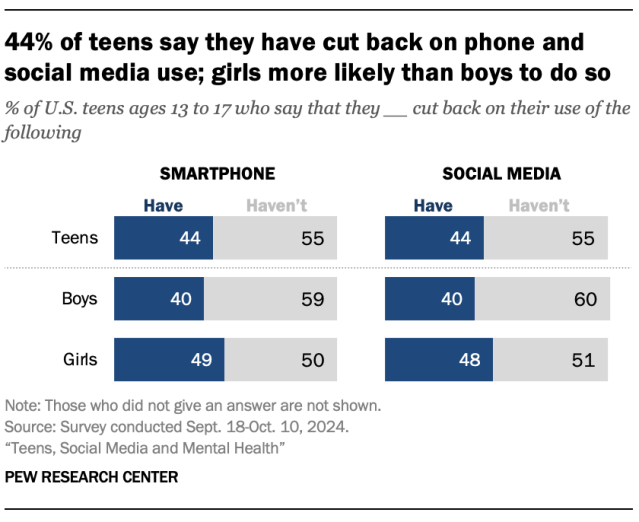10 facts about teens and social media
July 12, 2025

1 – Teens use YouTube more than any other platform we asked about, but they also widely use TikTok, Instagram and Snapchat. Nine-in-ten teens say they use YouTube. Majorities also use TikTok (63%), Instagram (61%) and Snapchat (55%).
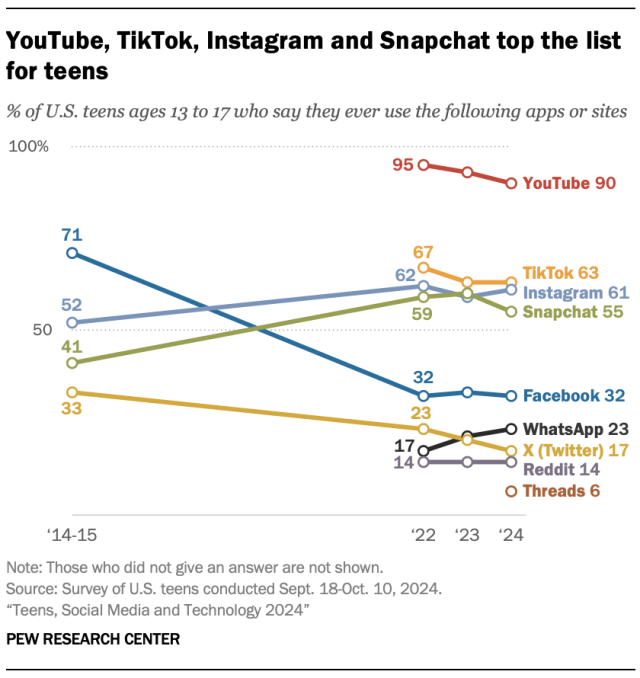
Teens’ use of Facebook and X – formerly known as Twitter – has declined steeply over the past decade. For instance, 71% of teens said they used Facebook in 2014-15 – far higher than the 32% who do so today.
Roughly a quarter of teens (23%) say they use WhatsApp. Smaller shares say they use Reddit (14%) and even fewer use Threads (6%).
2 – More than half of teens visit YouTube and TikTok at least daily, with some saying they’re on the sites “almost constantly.” About three-quarters of teens (73%) say they use YouTube daily. This includes 15% who describe their use as almost constant.
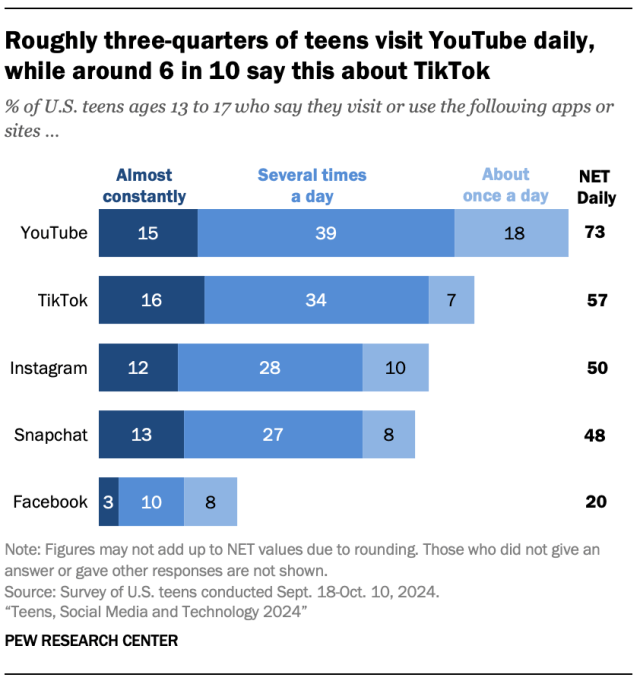 A majority of teens visit TikTok daily, with 16% reporting near-constant use. Instagram and Snapchat follow, with around half using each daily and about one-in-ten saying they’re on them almost constantly. Fewer teens (20%) say they visit Facebook every day.Across these five platforms, a third of teens use at least one of these online platforms almost constantly.
A majority of teens visit TikTok daily, with 16% reporting near-constant use. Instagram and Snapchat follow, with around half using each daily and about one-in-ten saying they’re on them almost constantly. Fewer teens (20%) say they visit Facebook every day.Across these five platforms, a third of teens use at least one of these online platforms almost constantly.3 – Teens’ use of social media platforms differs by demographic group. Black and Hispanic teens are especially likely to use TikTok, Instagram and X. For example, 79% of Black and 74% of Hispanic teens say they use TikTok, compared with 54% of White teens. Meanwhile, Hispanic teens are more likely than White and Black teens to use WhatsApp. (There were not enough Asian respondents in the sample to be broken out into a separate analysis. As always, their responses are included in the general population figures throughout.)
Larger shares of teen girls than boys say they use TikTok (66% vs. 59%) and Instagram (66% vs. 56%). Conversely, boys are somewhat more likely than girls to report using YouTube (93% vs. 87%).
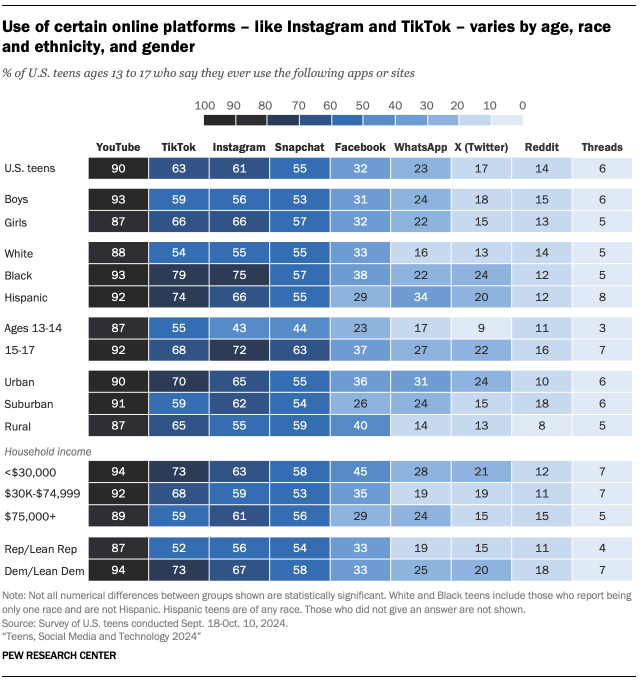
4 – Teens have become more negative about the impact of social media on their peers. About half of teens (48%) say social media have a mostly negative effect on people their age, up from 32% in 2022. And fewer now see social media as having a mostly positive effect: 11% say this, down from 24% in 2022.
Another 41% say these platforms have neither a positive nor negative effect on their peers.
We also asked teens how they think these platforms affect them personally. Far fewer teens say social media have a negative effect on them than say this of their peers (14% vs. 48%) – a pattern similar to 2022.
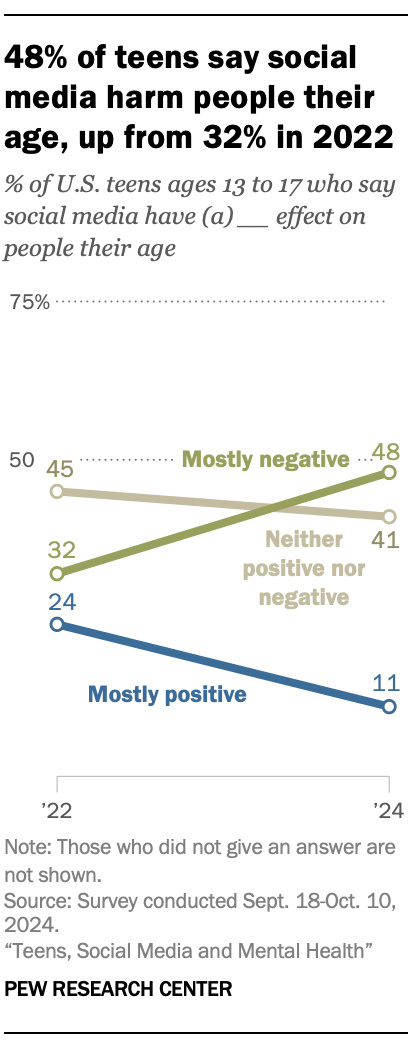
5 – Greater shares of teens now say they spend too much time on social media: 45% of teens say this today, compared with 27% in 2023 and 36% in 2022.
About half of teens (49%) say they spend about the right amount of time on these platforms. This is lower than the 64% who said this in 2023 and the 55% who said so in 2022.
Very few teens say they spend too little time on social media (6%). This view has remained stable in recent years.

6 – More teens say using social media hurts rather than helps their sleep, productivity, grades and mental health. Four-in-ten teens say using social media hurts their productivity, and 45% say this about their amount of sleep. About one-in-five say it hurts their grades (22%) and mental health (19%). For each, fewer say social media helps.
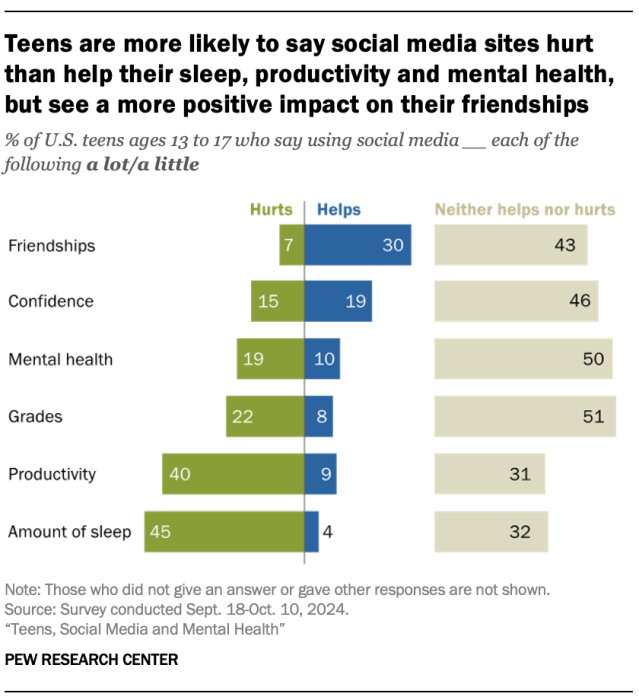
When it comes to friendships, more teens say social media platforms help than hurt (30% vs. 7%). Still, sizable shares of teens say these platforms neither hurt nor help each of these aspects of their lives.
Teen girls are more likely than boys to report social media hurting some aspects of their lives. For instance, a quarter of teen girls say using social media hurts their mental health, compared with 14% of teen boys.
7 – Majorities of teens say social media sites help them feel connected and creative. About three-quarters say these platforms make them feel more connected to their friends. And 63% credit social media with giving them a place to show their creative side.
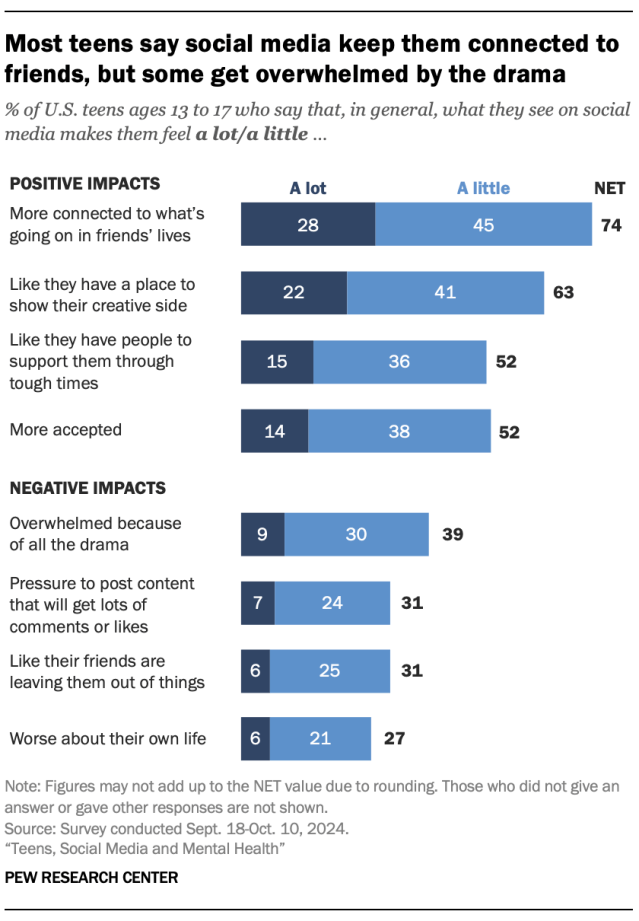
But some teens also experience negative impacts. For instance, 39% say they get overwhelmed by the drama on these platforms.
Teen girls are more likely than boys to report both some of the positive and negative impacts:
- 57% of girls vs. 45% of boys say social media make them feel like they have people to support them through tough times.
- 34% of girls vs. 20% of boys say these online platforms make them feel worse about their own lives.

There are also some differences by race and ethnicity when it comes to the degree to which they feel this way. For example, a quarter of Black teens say what they see on social media makes them feel a lot more accepted. Smaller shares of Hispanic (13%) and White (10%) teens say the same. The pattern is similar when it comes to feeling that social media platforms provide a lot of support through tough times.
8 – Parents are more likely than teens to blame social media for negatively impacting teen mental health. We also asked teens – and their parents – how concerned they are about teen mental health. For those who said they were at least somewhat concerned about the issue, we asked them to name the one thing that they think most negatively impacts teen mental health.
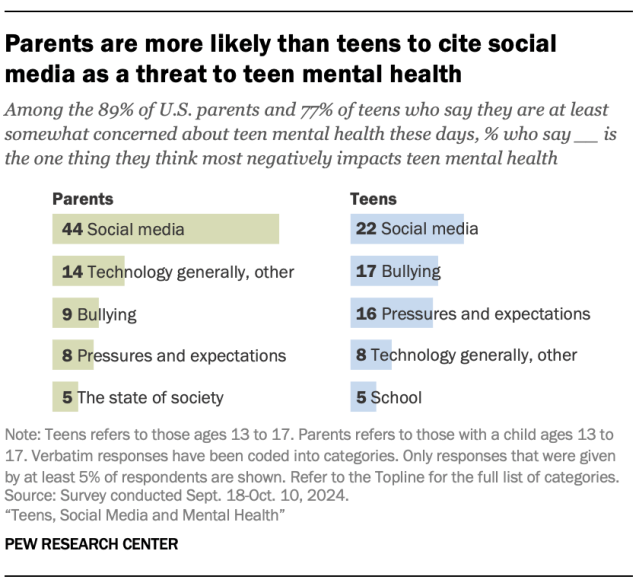
Among parents who are at least somewhat concerned about teen mental health, 44% cite social media as the top reason. This is far higher than any other reason, such as technology more broadly (14%) or bullying (9%).
For their part, teens are more split when it comes to the factor they think most negatively affects the mental health of people their age. Among those who are at least somewhat concerned about teen mental health, 22% of teens mention social media as the main cause. Others mention things like bullying (17%) and the pressures and expectations placed on teens (16%).
– Around a third of teens say they at least sometimes get information about mental health on social media. Among these teens, a majority (63%) say it’s an important way they get this kind of information – or that it’s the most important way.
There are gender, racial and ethnic differences in turning to social media for mental health information:
- A larger share of teen girls than boys report getting mental health information on social media at least sometimes (40% vs. 28%).
- Black teens (49%) are more likely than Hispanic (35%) and White (30%) teens to say the same.
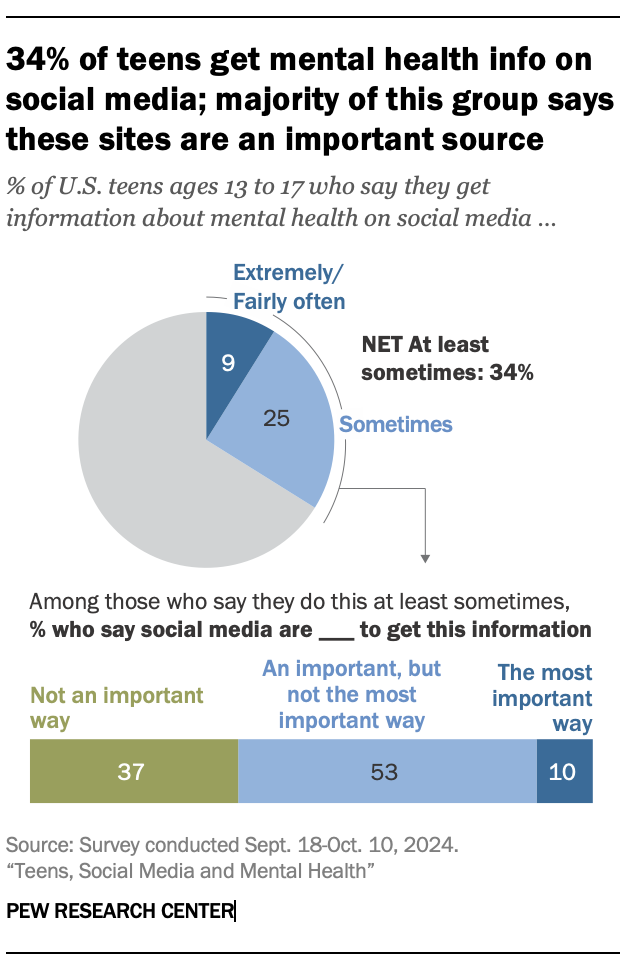
Just under half of teens (44%) say they’ve cut back on social media use. This is slightly higher than the 39% who said the same in 2023. Still, a majority (55%) say they haven’t reduced their use.
The pattern is similar when it comes to teens cutting back on their smartphone use.
